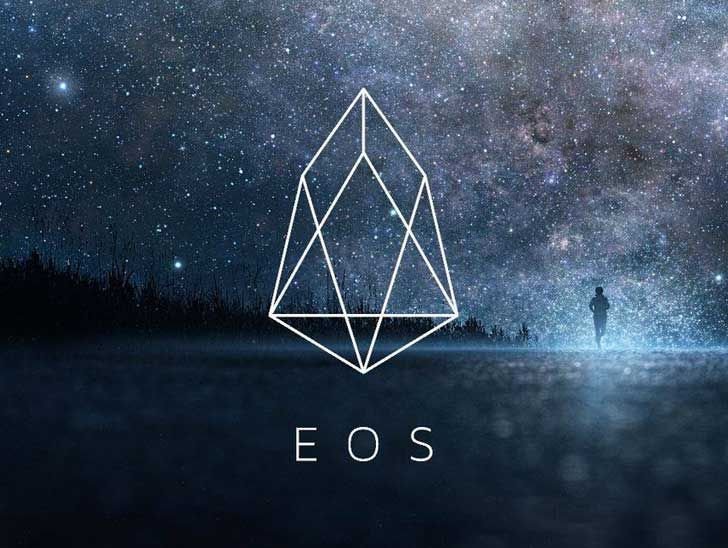
What is Scalability and Why is it Important?
Scalability is the ability of a system to grow while maintaining its purpose efficiently. This is important for any investor in cryptocurrencies, or any business for that matter. Before diving into EOS and its scalability, we shall first take some lessons from the world of business.
In business when someone says: "Can your business scale?", they actually mean, "Can your business grow in its number of sales and still turn a profit efficiently?". In other words, if you have increased demand for your product, can the business model service that demand at an efficient rate of cost.
Rates of Growth:
When we say that something grows at an "efficient rate of cost", we are actually saying: as the demand on the product or service increases over time, it won't become less and less efficient at serving its purpose.
If we look at the chart, we see a variety of growth rates. Let's say that the x-axis is the amount of demand of some product (sales made), and let's say that the y-axis represents the cost of producing additional products. This graph, then, shows the different growth rates of the cost of production as demand for the product grows.
The growth rates with poor scalability are the lines with gold and red colors. The magenta, turquoise, and blue all display good and scalable rates of growth in terms of the cost that it would take to increase production to meet the demand.
How does Scalability relate to Cryptocurrencies in General?
Cryptocurrencies have lofty goals of changing the way we do business. But as of right now, we have a hard time making this transition due to the recent observations and conclusions we have made during the last bull run on crypto in late 2017.
We all have probably experienced at least one high transaction fee on Bitcoin, or even being shut out from creating a new account at certain popular exchanges for weeks or months at a time. But how did this happen? Even the entire Ethereum network came to a standstill for a few days because it was clogged with kittens! See: http://www.bbc.com/news/technology-42237162
Whatever the case, we have seen that the overwhelming majority of the software in the industry was simply not ready to take the next step. Right now, Bitcoin can only service roughly 7-12 transactions per second. Ethereum has been reported to be around 20-30 transactions per second. MasterCard and Visa are capable of 30,000+ transactions per second using their payment infrastructure. So clearly we have a long ways to go, or do we?
In comes Dan Larimer and EOS
Dan Larimer, CTO of Block.one, is easily one of the most accomplished Blockchain Engineers in the world. His Delegated Proof of Stake consensus protocol has been used by a large amount of projects due to its scalable features. So he is not your'e everyday, run of the mill, "blockchain developer". He makes high performance blockchains, period.
In his most recent iteration, EOS.io, Dan has made claims that his newest version can push out a whopping "million transactions per second or more" at scale. Currently EOS has been reported to be doing 30k-50k tps in its testing phase. This is not surprising due to the fact that his two earlier projects have done roughly that same number in testing.
Block.one claims that EOS.io will be able to run this higher throughput due to the fact that it only needs to coordinate the transfer of blockchain messages amongst 21 block producing nodes. Contrast this with the hundreds of thousands if not millions of Bitcoin and Ethereum nodes in existence, and the reasons for such a improvement in efficiency starts to become more clear. If you need to coordinate a message of consensus between 21 people, you will finish orders of magnitude faster than trying to coordinate that message between millions of people.
If Visa and MasterCard only need 40k transactions per second, then why would we ever want upwards of 1 million transactions per second?
If you are familiar with blockchain, then you must have heard by now that blockchain does not aspire to simply become the new method of digital payments (which is a huge industry in its own right). It's aspirations are much wider in application. Blockchains are taking over the world of Data Storage, Data Security, Computer Networks, Governments, Payment Infrastructure, Medical History, Identity Protection, Digital Advertising, Financial Markets, Real Estate Tokenization, and much more. Even Social Media is being revolutionized, as you are now reading an article on a Blockchain called Steem (also made by Dan Larimer).
The massive amounts of data that will be tokenized and added to the blockchain touches almost everything you buy and sell, essentially the entire economy. This is why we call blockchain the "Internet of Value". So it makes sense that a single blockchain that wishes to service the entire economy must meet the demands of millions of transactions per second.
Will EOS fulfill its promise?
There is no reason why we should believe that EOS cannot fulfill this goal. The block.one team has reportedly obtained over a billion dollars from its crowd sale alone (that is a lot of runway). Multiple high profile VC's such as Mike Novagratz (Galaxy Digital), Eric Schmidt (Tomorrow Ventures and ex-CEO of Google), and others, are putting hundreds of millions of dollars into the project. Dan Larimer has experience of expanding blockchain scalability by orders of magnitude (he has done it before with Steem and Bitshares). Finally, the team has met all of their roadmap deadlines up till now.
Currently, in a recent Telegram chat with Dan Larimer, he suggested that EOS Dawn 3.0 will be released by the April 6th Tokyo Meetup https://www.eventbrite.com/e/eosio-hong-kong-meet-up-tickets-42667012182?aff=es2 . EOS Dawn 3.0 is the final major version being released before the main-net release in June 2018. Dan Larimer suggests that it will be feature complete, meaning that all of the major features will have been added for production and testing. As it stands, EOS will be tested from April 6th onward until June, and their seems to be a special announcement on April 6th along side the Dawn 3.0 release.
EOS For Investors Series:
- https://steemit.com/eos/@hassananon/eos-for-investors-parallel-processing-on-the-eos-blockchain
- https://steemit.com/eos/@hassananon/eos-for-investors-what-about-scalability
Check this game out, look close with an open mind with what this new concept is doing with open source Ethereum ERC-20 smart contracts, decentralized exchange and passive income. The game has passed the crypto kitties game on the Dapp Radar. The smart contract is coded to tax 10% of the ETH. when users purchase the (P)roof (O)f (W)eak (H)ands tokens and divides the ETH. tax to people who are already holding and also 10% of when users sell “20% total”. The name of the game is to hold as long as you can while you get earnings from the constantly taxed “Strong hand” buys and the taxed “weak hand” sells. If you don’t want to play anymore, you can pull out all your earnings all at once but with a 10% tax fee that gets divided to the stronger hands. This is what the ERC-20 smart contract is programed to do. Doesn’t hurt to look at the contracts open source code at least, don’t let the opportunity pass you by.

https://powh.io/?masternode=0x32c37e7ca38be1f85cd9e85c81ac9b6730f43e3e